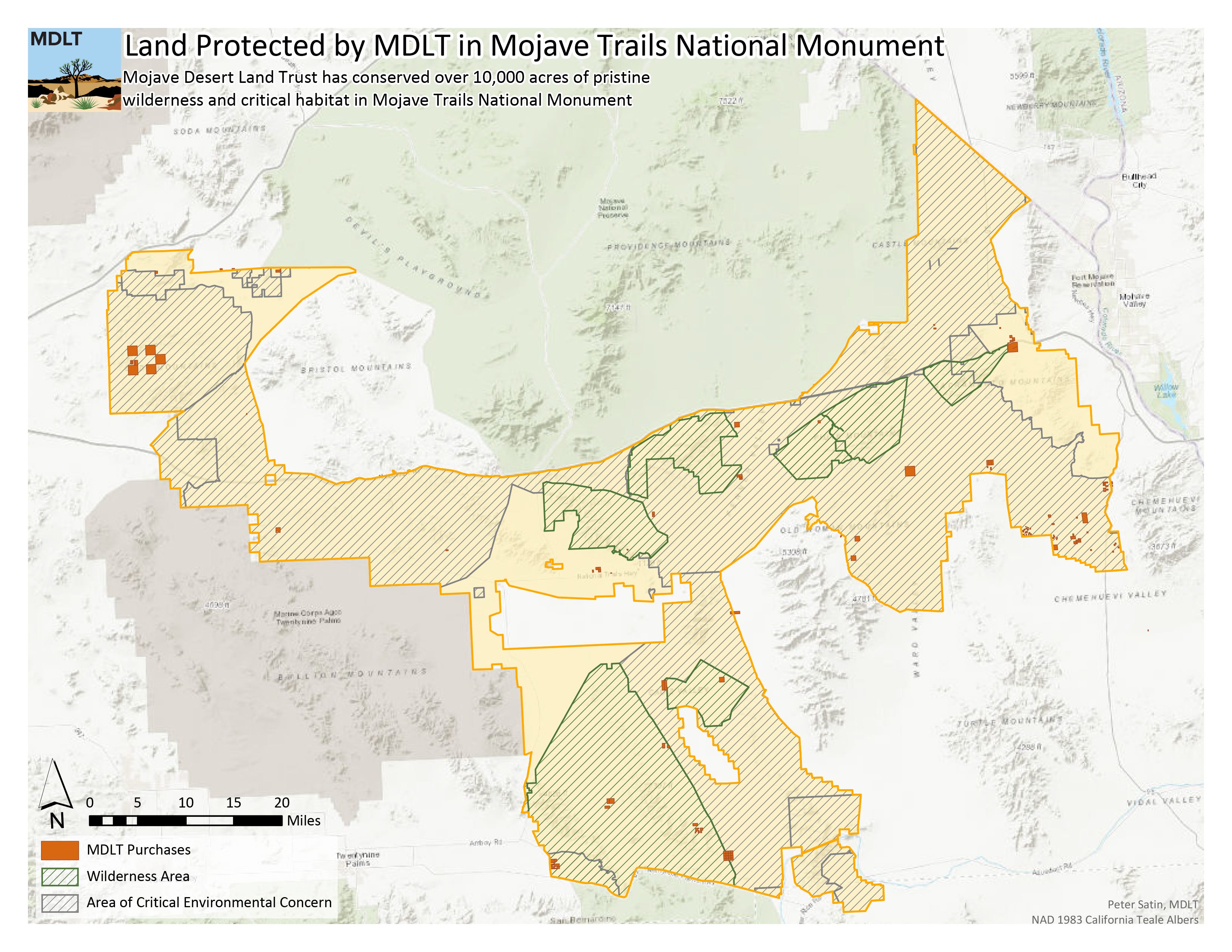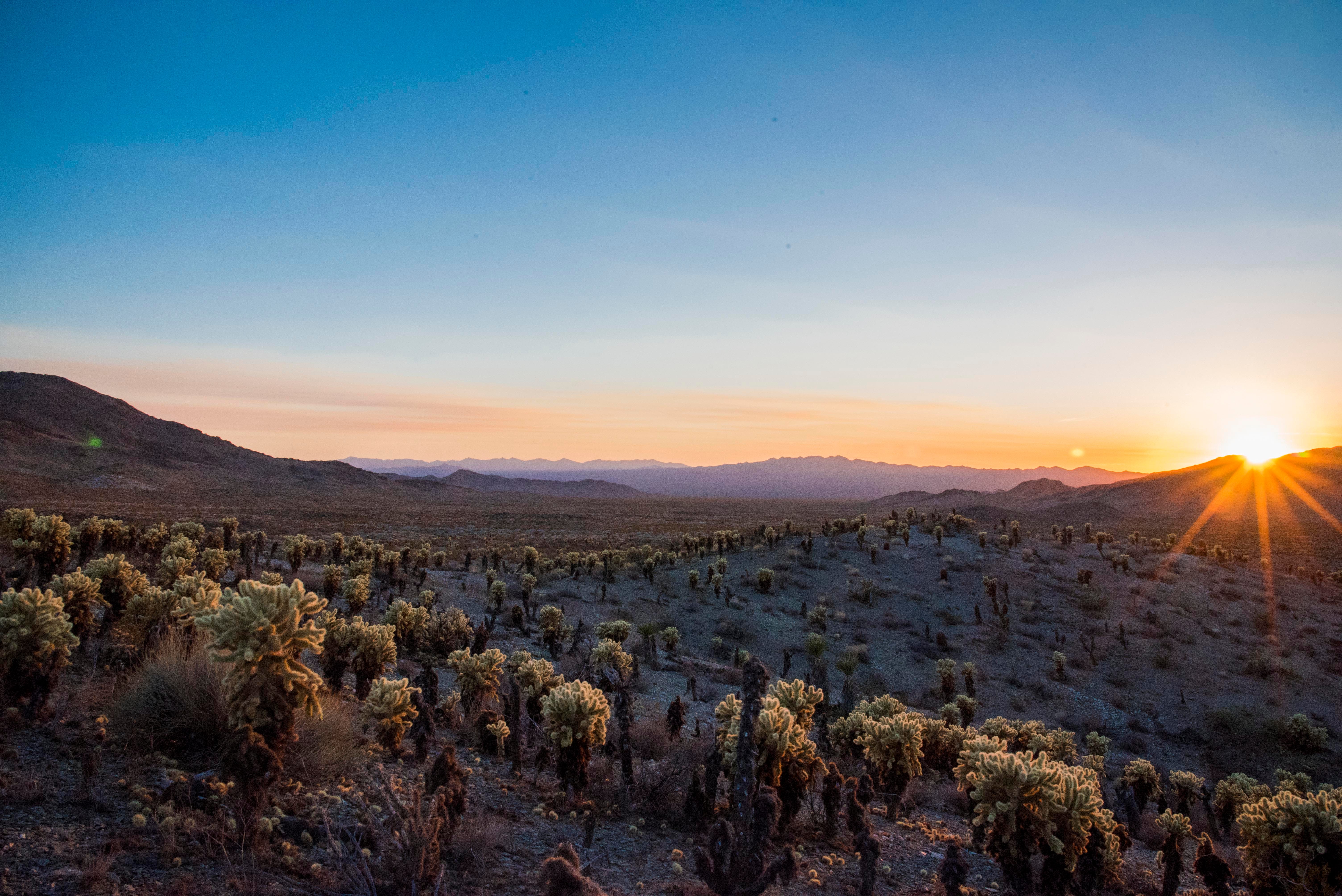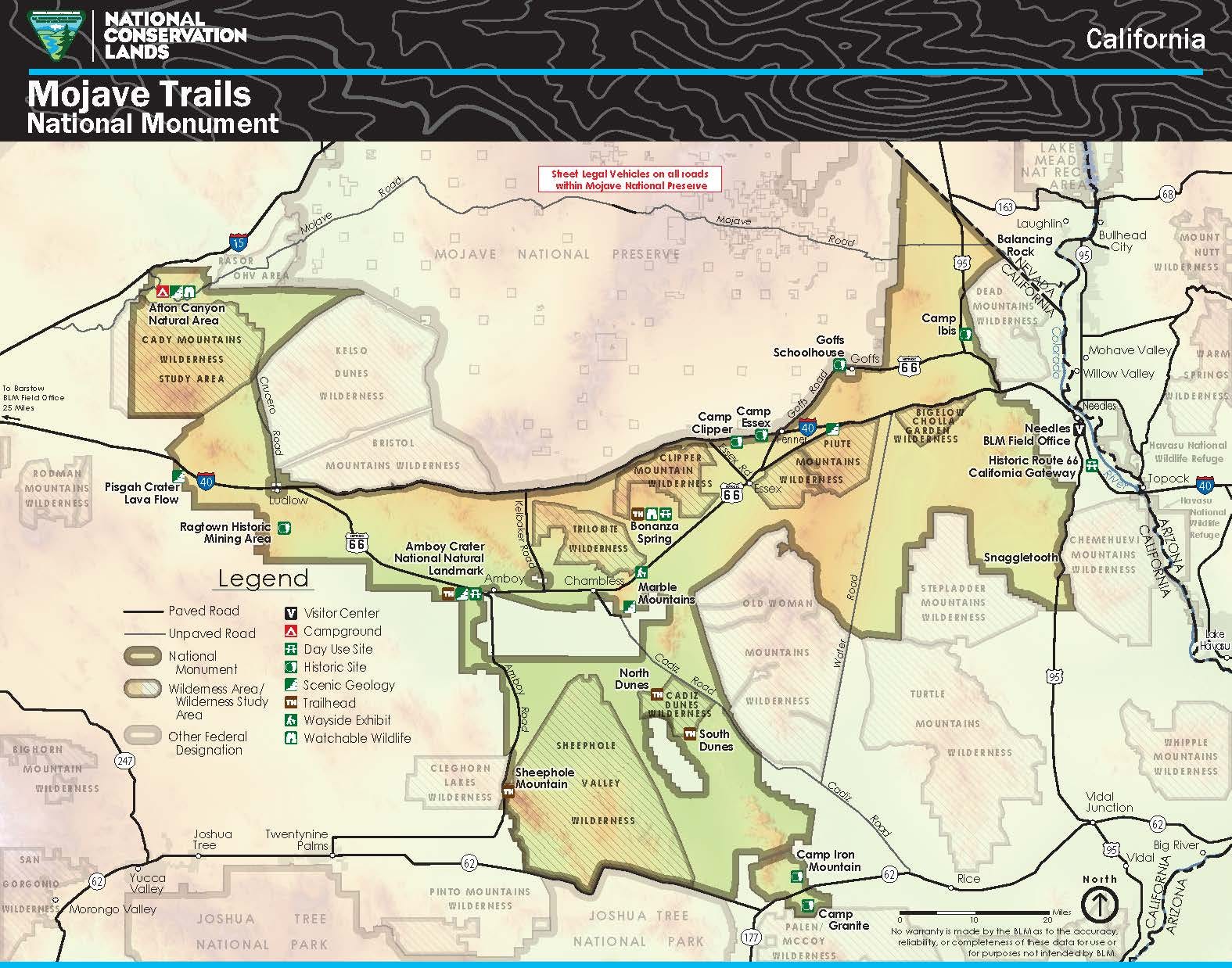The silence inside Mojave Trails
To date, the Mojave Desert Land Trust has acquired 10,000 acres within Mojave Trails National Monument. Over half of that is within wilderness.
Mojave Trails National Monument is a true desert experience. It has everything from pristine sand dunes and sweeping vistas to ghost towns and the open road. It is also a chance for people to experience complete silence and solitude. In part, that comes with its sheer scale — at 1.6 million acres it is the biggest national monument in the 48 contiguous states. But look closer and that vast space cradles a number of vital wilderness areas. A fifth of the monument is made up of wilderness. Of all land designations, wilderness has one of the highest levels of federal protection. It’s a place “where the earth and the community of life are untrammeled by man, where man himself is a visitor who does not remain”. 1 To date, the Mojave Desert Land Trust has acquired 10,460 acres across Mojave Trails National Monument. And more than half of those acquisitions — 5,718 acres — are within designated wilderness and wilderness study areas (locations that could one day be designated as wilderness, pending approval by Congress). Another 2,515 acres lie within areas of critical environmental concern. For the Mojave Desert Land Trust, this aligns with our goal to conserve pristine land. Within its borders, Mojave Trails includes wilderness areas, areas of critical environmental concern, wilderness study areas, wildlife corridors, active mining sites, and a variety of small towns, many of which are abandoned. There are also nearly 2,000 private parcels of land. While these private parcels present a threat to the overall management of the monument for conservation, many are unfeasible for conservation acquisition given their small size or proximity to developed sites. In 2018, a major purchase by the land trust included 599 acres next to the Bigelow Cholla Garden Wilderness, as the Desert Sun reported. The land trust aims to promote landscape connectivity and to protect land that will provide the healthiest possible ecosystem for desert flora and fauna. The monument does that and more. It preserves critical wildlife corridors between Mojave National Preserve and Joshua Tree National Park, and is bordered by various wilderness areas. It has some of the Mojave Desert’s best habitat for the threatened desert tortoise and creates important corridors for California’s state reptile.
KNOW BEFORE YOU GO: Wilderness areas are generally open to scientific research, hiking, nature study, scientific research, and camping. READ MORE: Presidential proclamation for Mojave Trails National Monument — With input from Halle Kohn and Peter Satin



